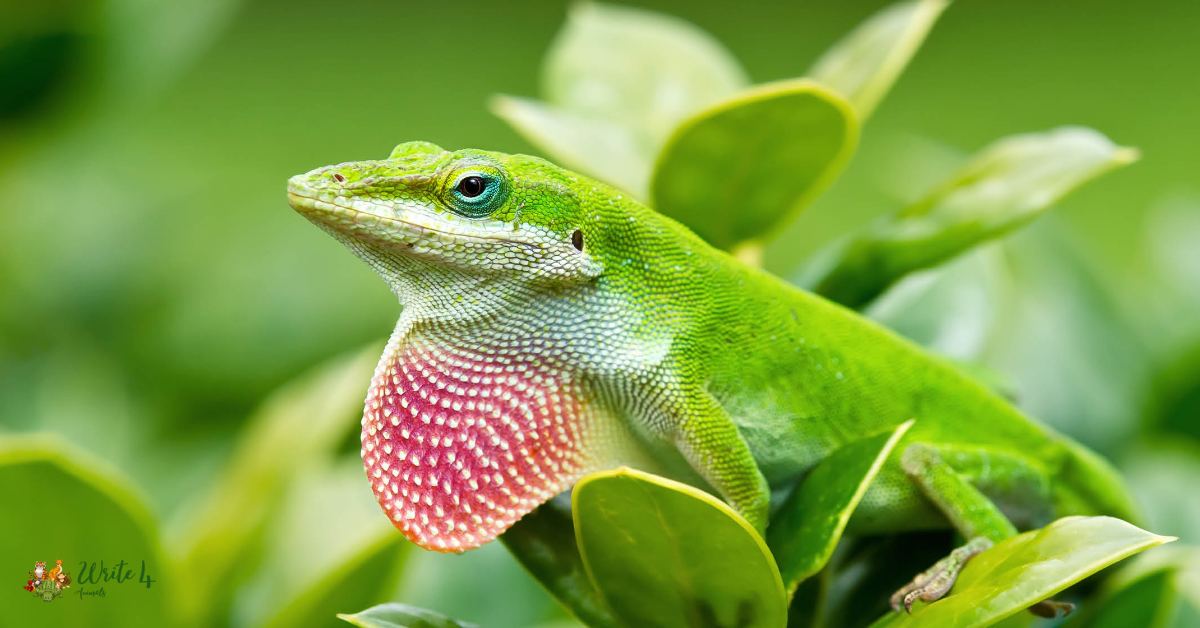Nature is a canvas painted with a myriad of colors, each shade telling a unique story. Among these hues, green stands out as a symbol of vitality, growth, and harmony. In the vast tapestry of the animal kingdom, there are creatures that proudly display the lush shades of green, blending seamlessly with their surroundings.
In this blog post, we will embark on a journey to discover list of 15 green animals from around the world, each contributing to the rich biodiversity of our planet and will share complete information about animals that are green.
15 Green Animals in the world
1. Emerald Tree Boa
In the heart of the Amazon rainforest, the Emerald Tree Boa coils with grace around branches, showcasing its vibrant green scales adorned with a distinctive white dorsal stripe.
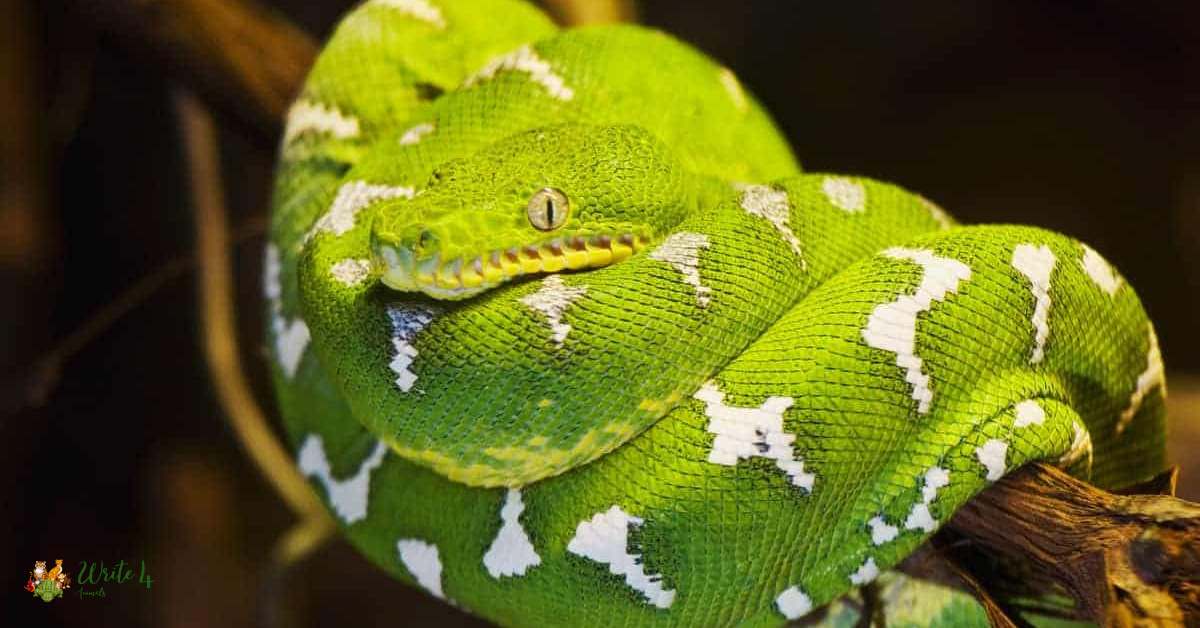
Evoking the lush foliage that surrounds it, this arboreal serpent is a living testament to the mesmerizing diversity of green animals. Perfectly adapted to its rainforest habitat, its striking coloration not only aids in camouflage but also adds a splash of emerald to the rich tapestry of the Amazon’s flora and fauna.
As a symbol of the thriving biodiversity within the world’s largest rainforest, the Emerald Tree Boa captures the essence of green animals in their natural habitat.
2. Green Iguana
The Green Iguana, a resident of Central and South American rainforests, is a testament to the vibrant hues that adorn the tropical canopy. Its emerald-green scales, coupled with a striking dewlap and spiky dorsal crest, make it a true embodiment of the term “green animals.”
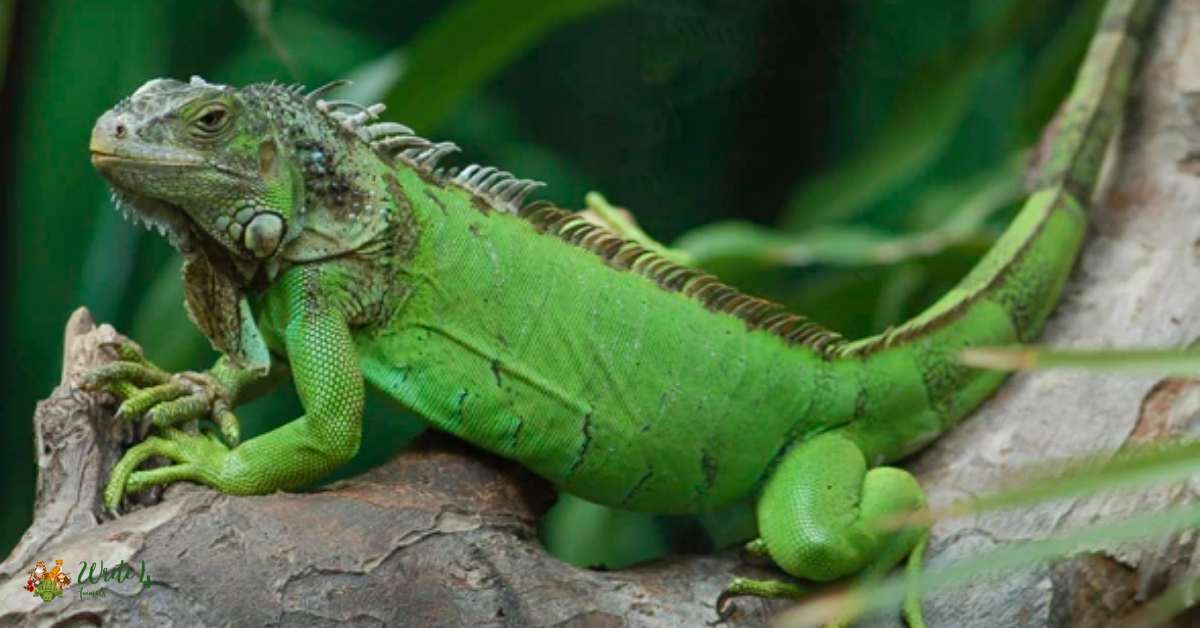
As an arboreal lizard, it navigates the treetops with agility, blending seamlessly with the verdant foliage. The Green Iguana’s color not only provides effective camouflage but also contributes to the visual symphony of green that characterizes its habitat.
A living expression of the lush ecosystems it inhabits, this remarkable creature underscores the importance of preserving the biodiversity of the world’s rainforests.
3. Green Jay
Dazzling in the woodlands and forests of North and Central America, the Green Jay stands as a vibrant representative of green animals in the avian realm. With its luscious green plumage adorned with striking blue accents, this songbird is a visual delight among the branches.
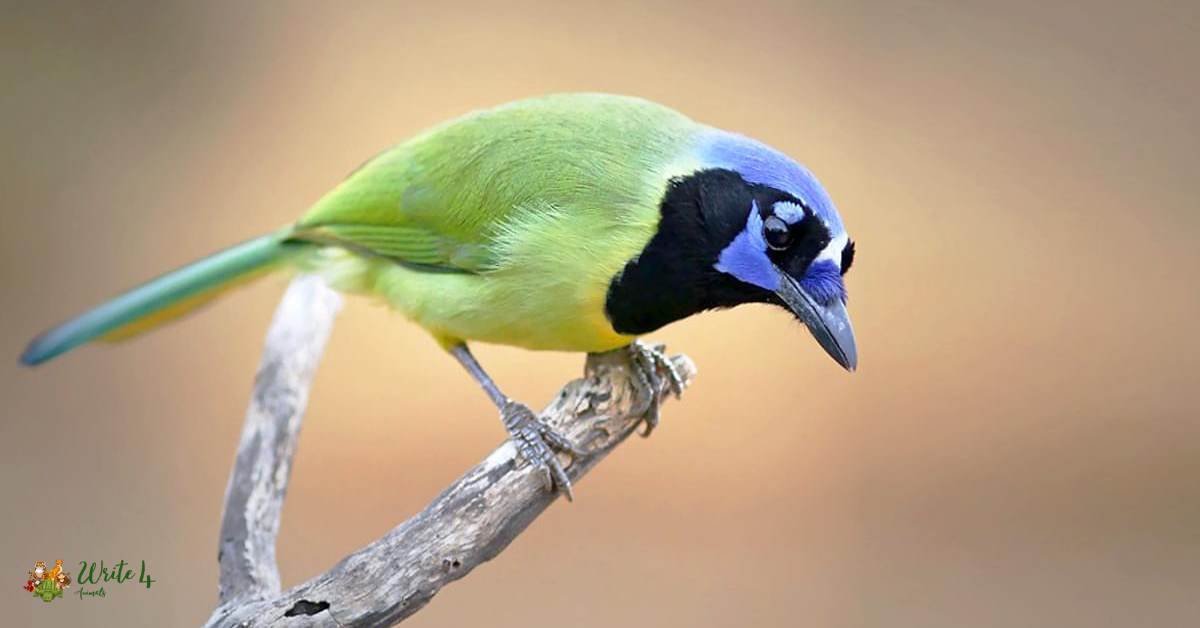
As a vocal and social species, the Green Jay embodies the lively spirit of its habitat. Its green feathers not only serve as a means of camouflage but also contribute to the harmonious mosaic of colors in the diverse ecosystems it calls home.
In the avian kingdom, the Green Jay is a living canvas of green hues, a testament to nature’s penchant for creating stunning works of art through its creatures.
4. Green Basilisk Lizard
In the rainforests of Central America, the Green Basilisk Lizard, aptly named the “Jesus Lizard,” glides across water with remarkable agility, its vibrant green hue blending seamlessly with the surrounding foliage.

The striking green coloration of this lizard serves not only as a means of camouflage but also adds an enchanting touch to its appearance. With a distinctive crest and agile movements, the Green Basilisk is a living embodiment of the lush ecosystems it inhabits.
As a master of both land and water, this remarkable lizard contributes to the dynamic diversity of green animals, showcasing nature’s ability to create creatures with unique adaptations that thrive in their intricate habitats.
5. Green Tree Python
Hailing from the rainforests of New Guinea and northern Australia, the Green Tree Python is a captivating arboreal snake that epitomizes the beauty of green animals.
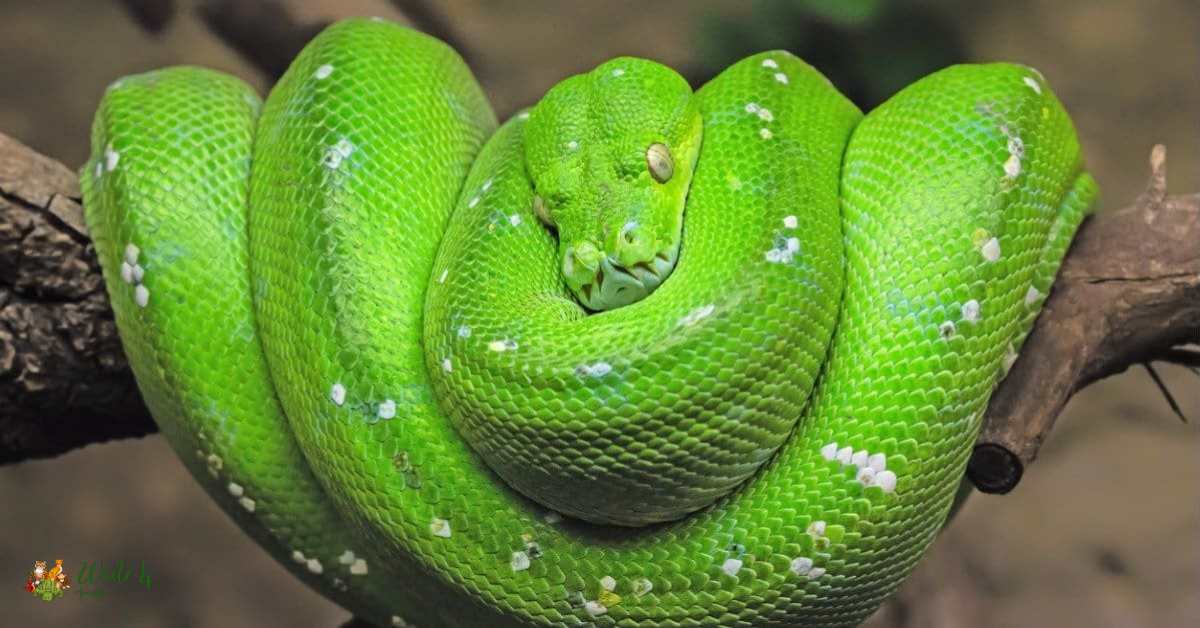
With its emerald-green scales, coiled gracefully among branches, this python is a living jewel in the heart of dense tropical foliage. The vivid green coloration not only provides effective camouflage but also serves as a stunning visual display. As a non-venomous constrictor, the Green Tree Python relies on its cryptic coloration to ambush prey in the canopy.
This snake, with its vibrant green hues, exemplifies the intricate interplay between color, adaptation, and survival in the ecosystems it calls home, contributing to the awe-inspiring palette of green animals worldwide.
6. Komodo Dragon
Emerging as the largest lizard on Earth, the Komodo Dragon reigns over the volcanic islands of Indonesia, showcasing its rugged, greenish-brown exterior. Its formidable size and scale patterns contribute to its effective camouflage in the dense vegetation of its habitat.

Despite being a reptilian giant, the Komodo Dragon’s green-tinged scales serve as a testament to the adaptability and evolution of these ancient creatures.
As a predator at the top of the food chain, its green hues underscore the harmonious relationship between the dragon and its lush island surroundings, emphasizing the vital role it plays in maintaining the ecological balance of its unique ecosystem.
7. Boomslang
Slithering through the branches of sub-Saharan Africa’s savannas and woodlands, the Boomslang is a venomous snake adorned with a vibrant green hue. Its slender body, marked by large eyes, exemplifies its role as an agile tree climber.
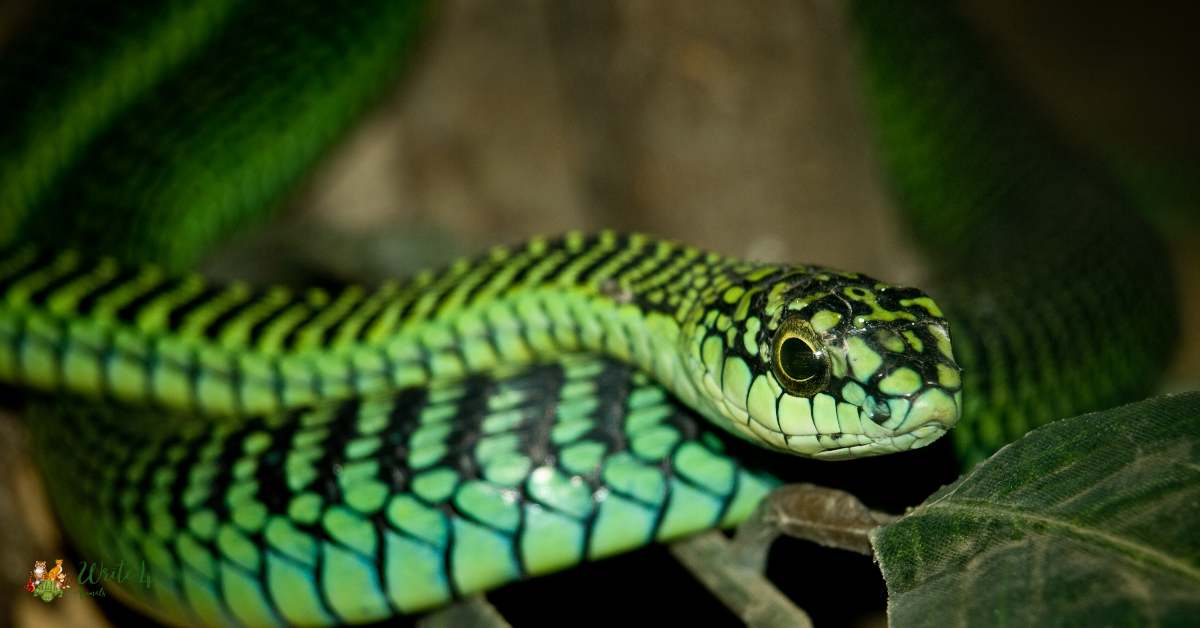
The green coloration of the Boomslang serves a dual purpose – offering camouflage amidst the foliage and acting as a visual warning to potential predators.
This serpent, with its cryptic appearance and potent venom, plays a crucial role in shaping the dynamics of its ecosystem, underscoring the significance of green animals in maintaining the delicate balance of nature.
8. Amazon Parrots
Soaring through the vibrant rainforests of Central and South America, Amazon Parrots bring a burst of vivid green to the skies. With their plumage adorned in various shades of green, these intelligent and social birds become integral members of the canopy community.
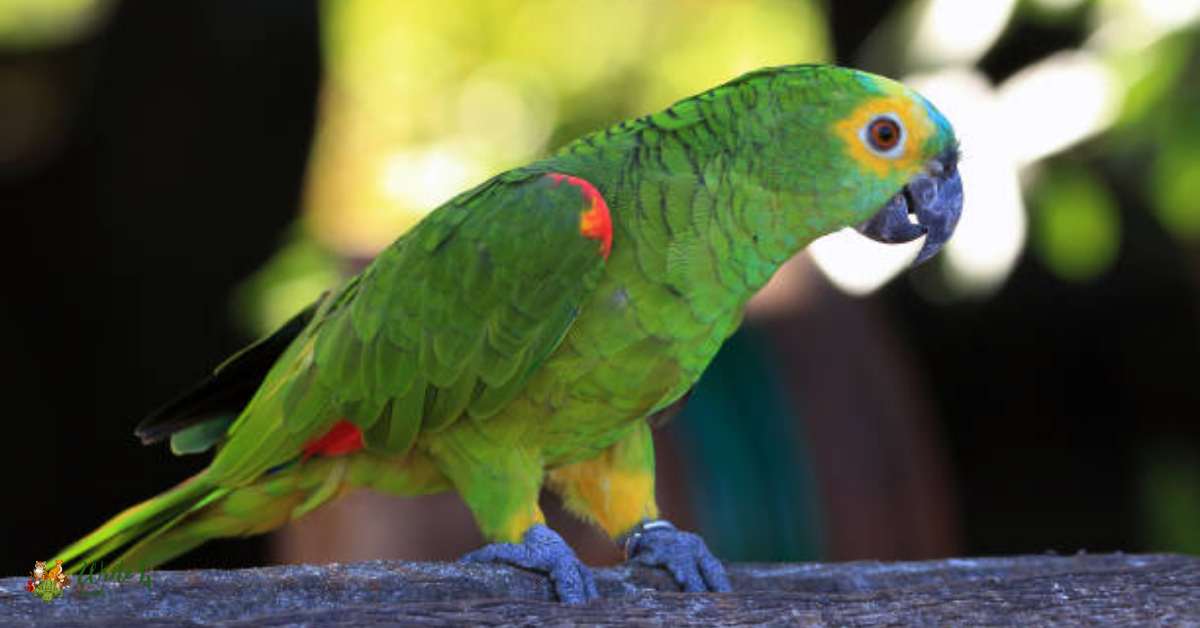
The dazzling green feathers not only serve as a means of camouflage but also play a role in intricate courtship displays and communication.
Amazon Parrots, with their striking green presence, contribute to the lively symphony of colors that characterize the diverse ecosystems they inhabit. As ambassadors of the treetops, they highlight the interconnectedness
9. Green Anole
In the southeastern United States, the Green Anole, or American chameleon, introduces a touch of emerald to the landscape. Despite not being a true chameleon, this lizard showcases a remarkable ability to change color, highlighting its adaptability.
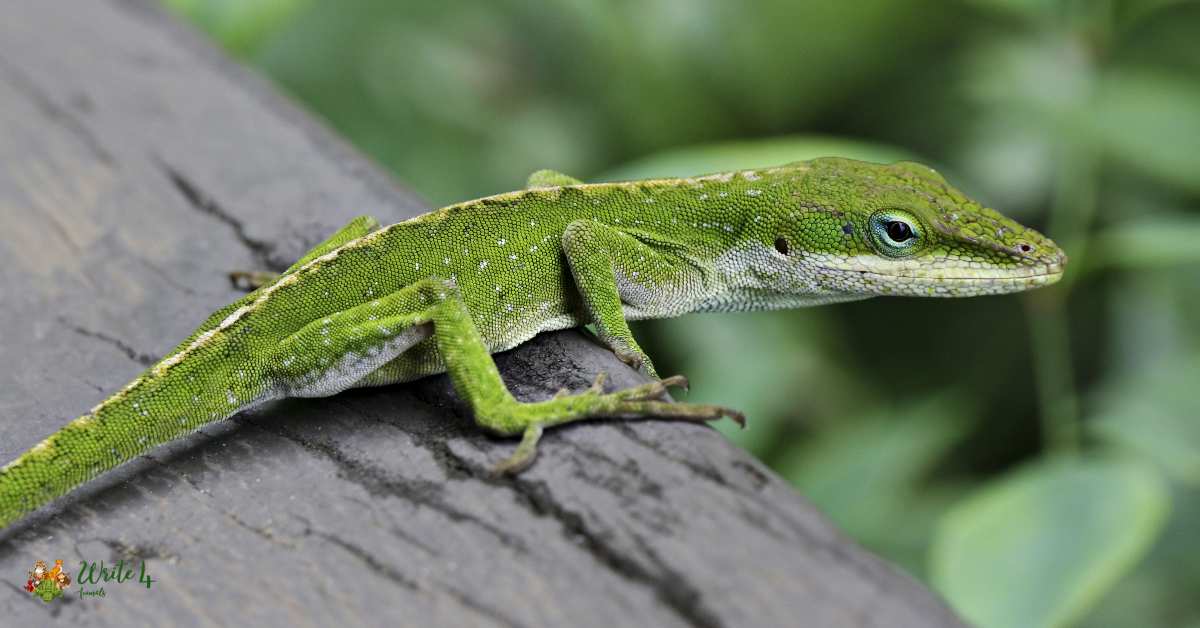
With a slender body, dewlap, and a vibrant green coloration, the Green Anole seamlessly navigates its surroundings, providing a living testament to the diverse habitats it calls home.
As a symbol of resilience and versatility, this small lizard exemplifies the intricate relationship between green animals and the dynamic ecosystems that shape their lives.
10. Glorious Scarab
In the arid landscapes of Central America, the Glorious Scarab beetle unfolds its wings, revealing a radiant green exoskeleton that glimmers like a precious gem. With a metallic luster, this scarab beetle becomes a living jewel against the backdrop of its habitat.
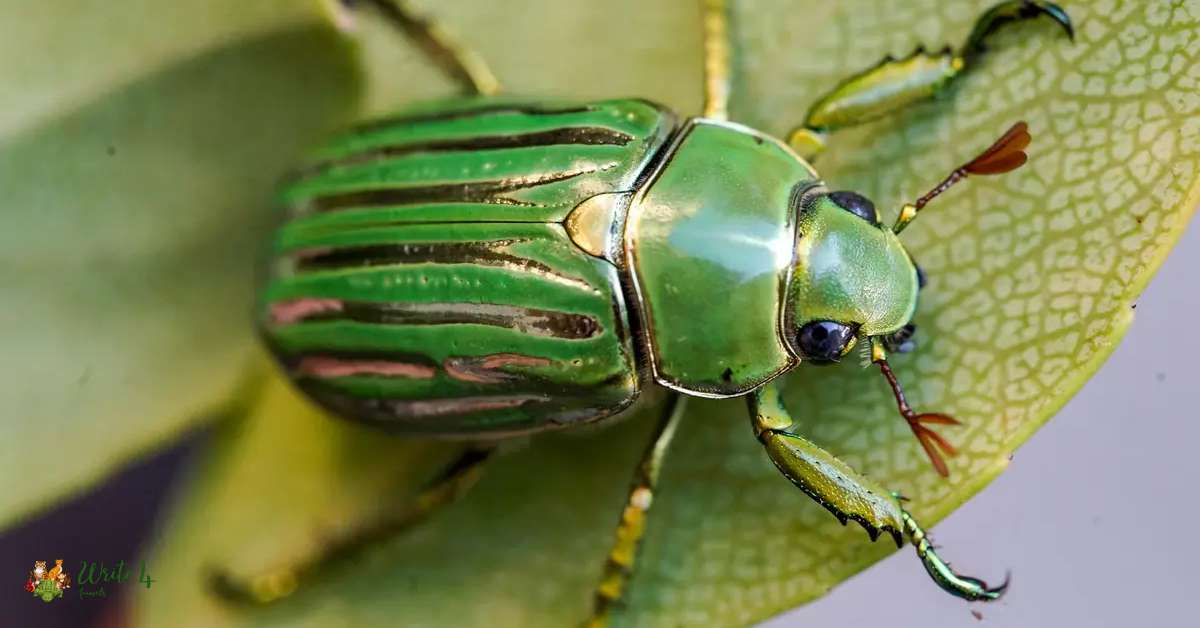
The brilliant green coloration serves both as a form of protection and a dazzling display during courtship rituals. As a symbol of resilience and adaptability, the Glorious Scarab underscores the intricate relationships between green animals and their environments.
In its iridescent presence, this beetle becomes a testament to the intricate balance of nature, adding another fascinating chapter to the story of green animals around the world.
11. Green Parrotfish
Beneath the waves of coral reefs in the Indo-Pacific region, the Green Parrotfish roams, contributing to the vibrant marine ecosystem. Their striking green and blue coloration, combined with a parrot-like beak, make them a standout feature on coral reefs.
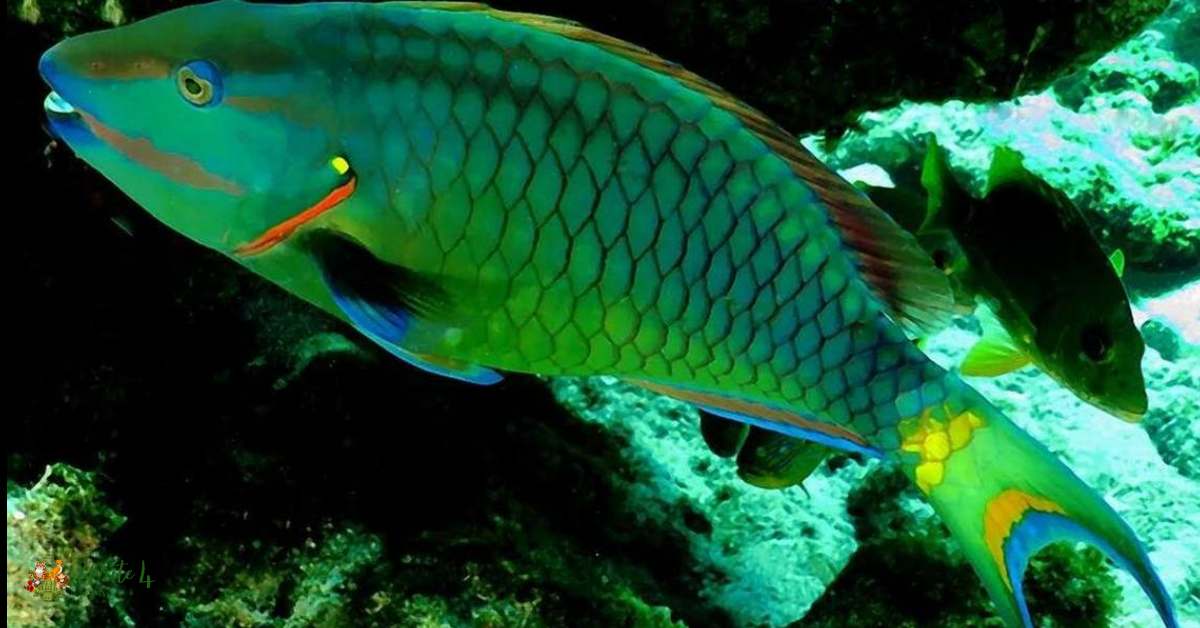
Beyond their visual appeal, Green Parrotfish play a crucial role in maintaining the health of coral reefs. Feeding on algae, they prevent it from overgrowing and choking the corals, thereby supporting the delicate balance of these underwater ecosystems.
The vivid green hues of the Green Parrotfish not only enhance the allure of coral reefs but also signify their ecological importance in preserving the underwater wonders of our planet.
12. Green Katydid
Hidden among the foliage in meadows and gardens, the Green Katydid is a master of mimicry. Its leaf-like appearance and vibrant green color help it blend seamlessly with the vegetation, providing effective camouflage against potential predators.
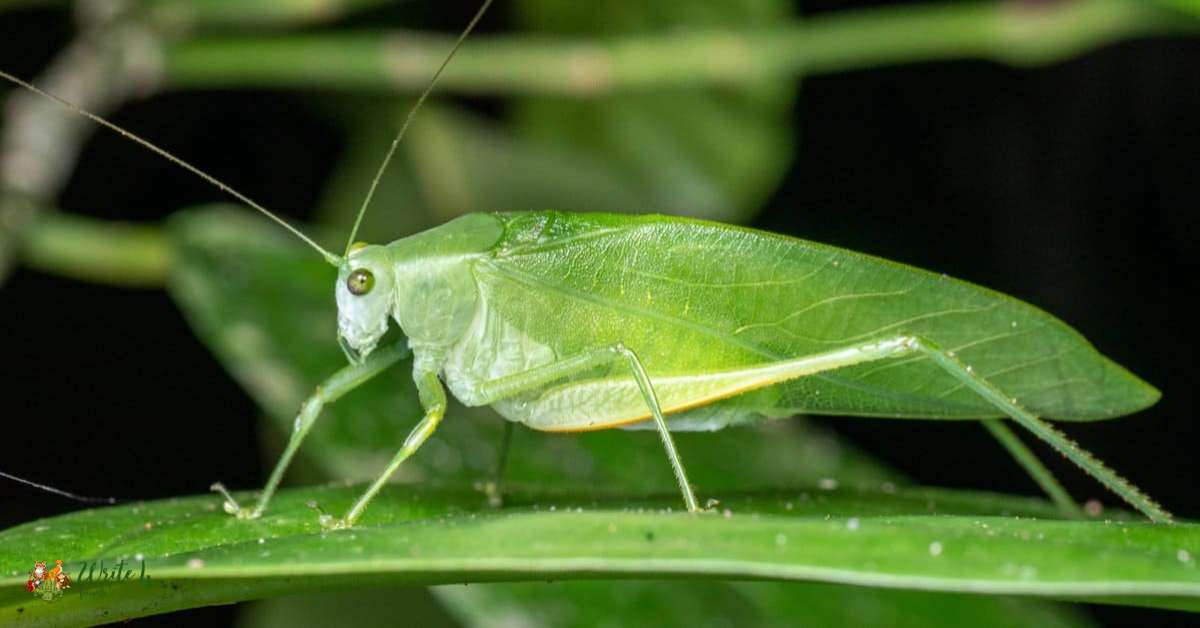
Beyond its cryptic disguise, the Green Katydid is a symphony of nature, producing intricate songs to communicate and establish territory.
As a resident of diverse terrestrial habitats, this insect embodies the interconnectedness between green animals and their environments, showcasing the fascinating adaptations that enable them to thrive in their natural niches.
13. Green Swallowtail Butterfly
Fluttering through the tropical rainforests of Southeast Asia, the Green Swallowtail Butterfly is a delicate yet vibrant creature. Its wings, adorned with shades of green and subtle iridescence, make it a captivating sight as it dances among the flowers.
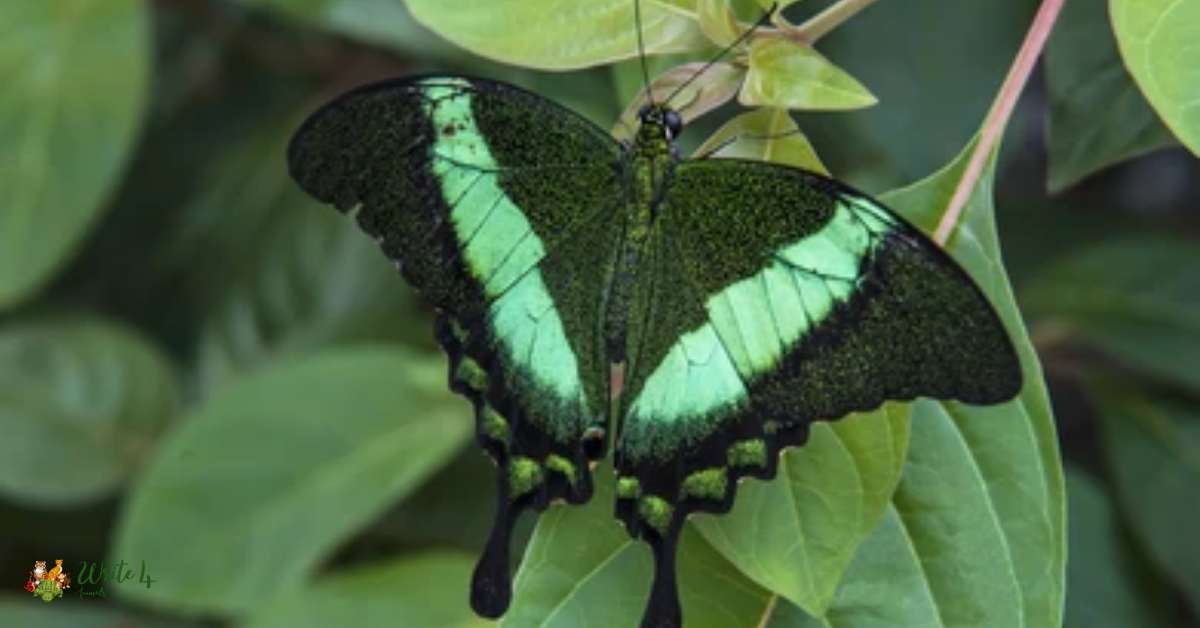
Beyond its aesthetic appeal, this butterfly plays a vital role in pollination, contributing to the reproduction of countless plant species.
The green hues of the Green Swallowtail Butterfly not only serve as a visual spectacle but also underscore its ecological significance in the intricate web of life within the lush rainforest habitats it inhabits.
14. Green Anaconda
Our journey concludes in the swamps and rivers of South America, where the Green Anaconda, the world’s largest snake, resides. Its olive-green scales provide effective camouflage in aquatic environments, and the sheer size of this constrictor showcases the awe-inspiring diversity of the natural world.
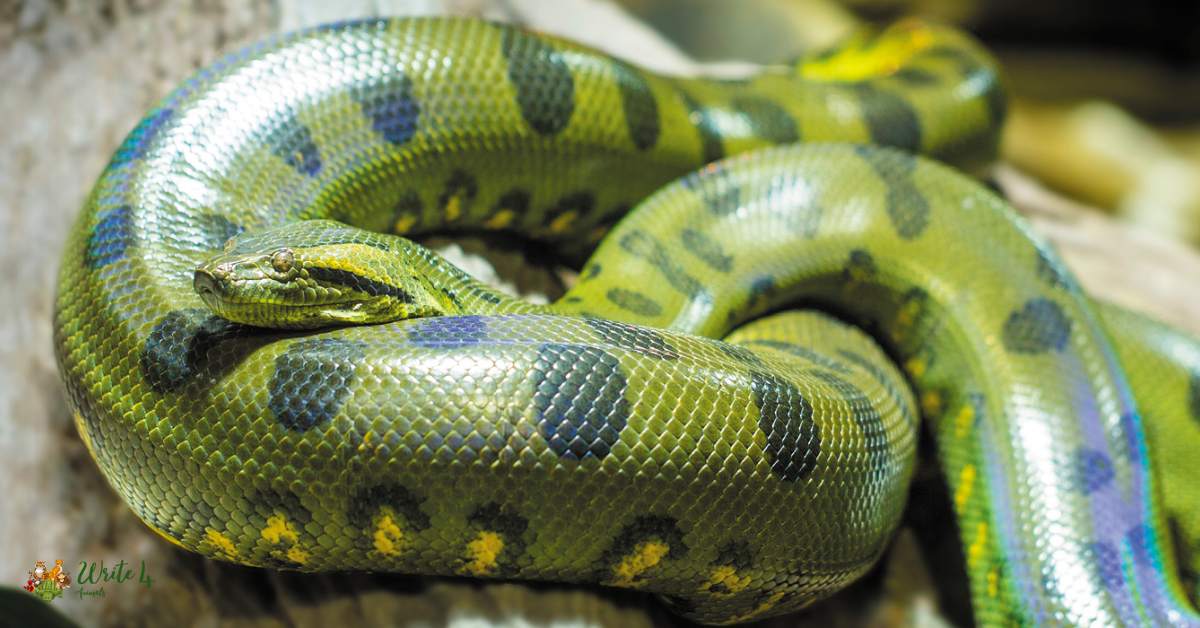
As a top predator in its ecosystem, the Green Anaconda regulates the population of prey species, contributing to the delicate balance of the Amazonian wetlands.
The cryptic green coloration of this massive serpent serves as a testament to its role as a master of ambush and stealth in the waterways, exemplifying the coexistence of power and grace in the world of green animals.
15. Luna Moth
Bringing a touch of ethereal beauty to the canopy, the Luna Moth graces the night skies of North America. With its luminous green wings and delicate form, this nocturnal marvel adds a touch of enchantment to the tapestry of green animals worldwide.
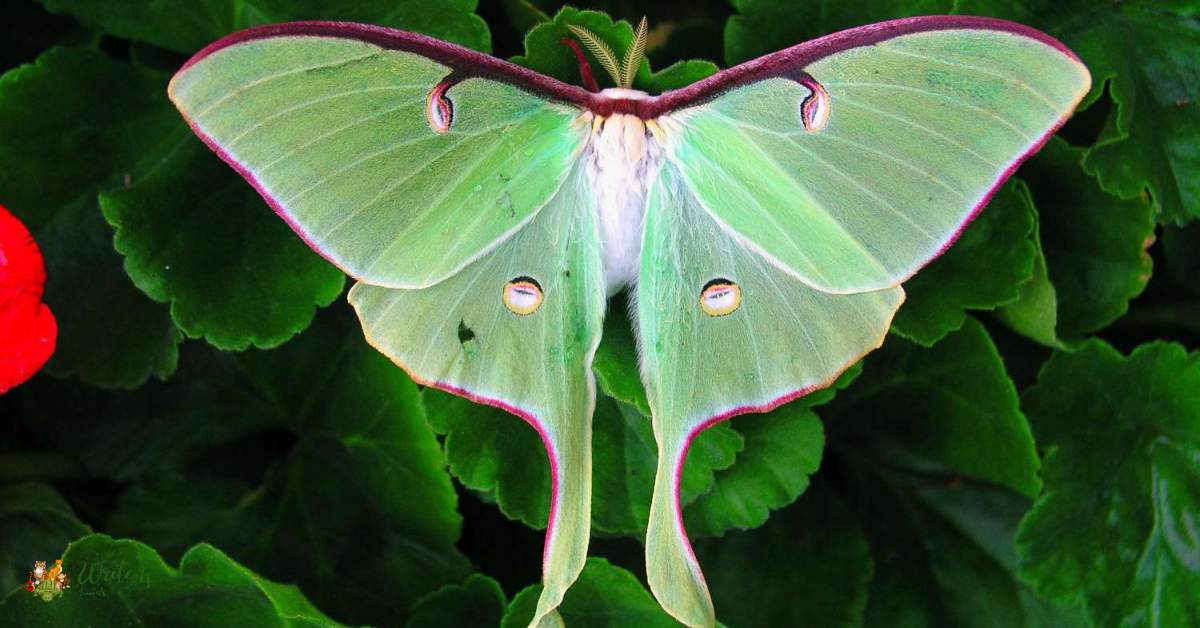
As a symbol of transformation and rebirth, the Luna Moth undergoes a metamorphic journey, reflecting the cyclical nature of life in the animal kingdom. The subtle green hues of its wings contribute to its mystique, making it a creature of folklore and fascination.
As it flutters through moonlit nights, the Luna Moth becomes a poetic embodiment of the delicate balance between fragility and resilience within the realm of green animals.
Frequently Asked Questions
What are green animals?
Green animals refer to a diverse array of species across different taxonomic groups that exhibit shades of green in their physical appearance. This coloration can serve various purposes, including camouflage, communication, and thermoregulation.
Why are some animals green?
The green color in animals is often a result of pigments, such as chlorophyll or biliverdin, in their skin, fur, feathers, or scales. This coloration can provide effective camouflage in specific environments, aid in thermoregulation, or play a role in mate attraction and communication.
How do green animals use their color for survival?
Green animals utilize their coloration for survival in diverse ways. Many species, such as chameleons and tree frogs, can change their color to match their surroundings, providing effective camouflage. Additionally, green animals in aquatic environments often blend in with underwater vegetation to avoid predators.
Are there green animals in different habitats?
Yes, green animals can be found in various habitats, including rainforests, savannas, oceans, and even deserts. Each species has adapted to its specific environment, using its green coloration for different purposes depending on the challenges and opportunities presented by its habitat.
What is the significance of green animals in ecosystems?
Green animals play a crucial role in ecosystems. They contribute to the balance of food webs, serve as pollinators, control pest populations, and act as indicators of environmental health. Their coloration often reflects adaptations that aid in survival and contribute to the overall biodiversity of their respective ecosystems.
Can green animals change their color?
Some green animals, particularly reptiles like chameleons and certain species of frogs, have the ability to change their color. This adaptive ability allows them to match their surroundings, regulate body temperature, and communicate with other members of their species.
Do green animals have any predators?
While the green coloration of many animals provides effective camouflage, some predators have adapted to detect and capture green prey. Predators may use other senses, such as smell or hearing, to locate potential meals. Additionally, certain green animals possess toxins or venom, deterring predators from attempting to prey on them.
Recommmended
1. Kangal Dog Price, Characteristics, and More 2023
2. 15 blue animals in the world
